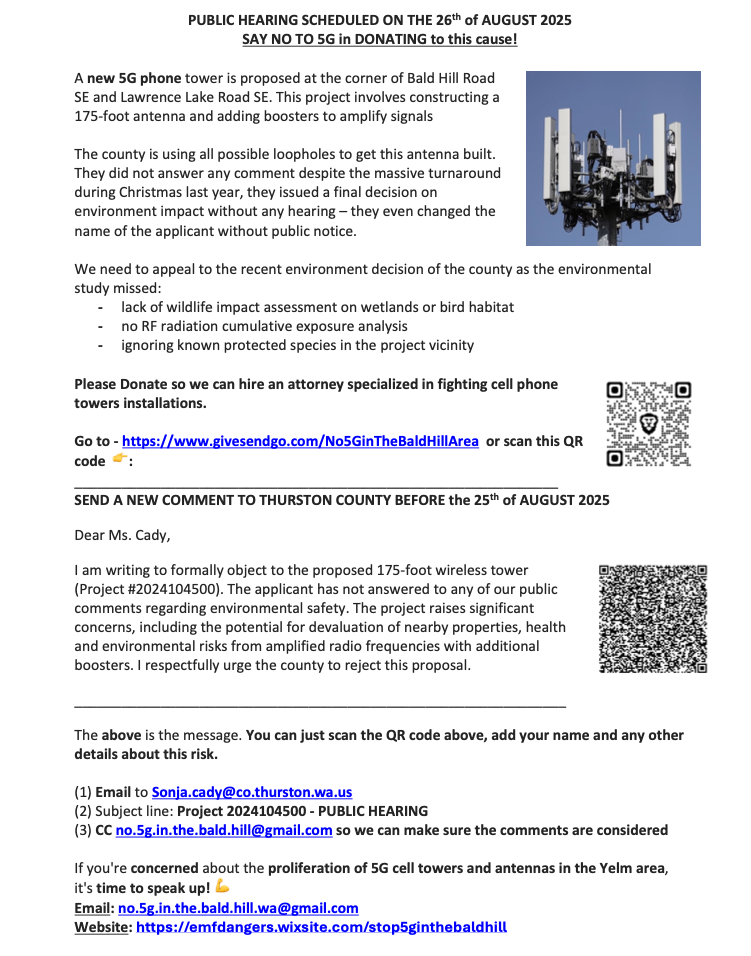Are FCC Wireless Radiation Exposure Limits Outdated? Ohio Lawmakers Raise Concerns
- julienbouetard7
- Mar 16
- 3 min read
In recent years, the rapid growth of wireless technology has significantly changed our everyday lives. While these advancements offer many conveniences, they also raise serious health and safety questions. With the ever-increasing use of cell phones, Wi-Fi, and various wireless devices, concerns regarding the existing regulations intended to protect us from potential harm from wireless radiation have intensified. A group of lawmakers in Ohio has taken a bold step by addressing the Federal Communications Commission (FCC) about its wireless radiation exposure limits, which have remained unchanged since 1996.
This blog post examines the implications of these outdated limits, the feedback from the FCC, and what this means for public health as technology continues to evolve.
Historical Context of FCC Limits
To grasp the current situation, it is crucial to understand that the FCC implemented its wireless radiation exposure limits over 25 years ago. In 1996, when these guidelines were established, our technological landscape looked vastly different. Consider that mobile phones were primarily used for voice calls, and fewer than 20% of households had internet access.
Since then, the arrival of smartphones and tablets has transformed our technology usage. According to the Pew Research Center, approximately 97% of Americans own a cell phone, and nearly 85% have smartphones. As our reliance on these devices has increased, so have the inquiries about whether the FCC guidelines sufficiently address present health risks linked to wireless radiation exposure.
Ohio Lawmakers Take Action
In response to growing public concerns, several Ohio lawmakers have sent letters to the FCC, urging the agency to review its current radiation exposure limits. They cite a recent federal court mandate requiring the FCC to clarify how its existing regulations protect public health, especially in light of emerging scientific studies.
Lawmakers emphasize that wireless technology should not compromise public safety. They argue that current limits are outdated and fail to offer adequate protection against potential health risks from sustained exposure to radio-frequency radiation. For instance, a study published in 2020 found that long-term exposure to high levels of radiofrequency power can lead to an increase in glioma, a type of brain cancer, particularly among heavy cell phone users.
Scientific Community Weighs In
Many scientists and health experts share concerns about the potential hazards of prolonged wireless radiation exposure. Research has shown associations between wireless radiation and several health issues, such as an increased risk of specific cancers, reproductive problems, and neurological disorders. For example, a 2019 study by the National Toxicology Program indicated that male rats exposed to high levels of cell phone radiation developed tumors in their hearts.
Despite these alarming findings, the FCC has maintained that its current exposure limits are based on scientific evidence and are sufficient for protecting public health. However, the agency's lack of a substantial response to the federal court's directive has raised questions about its transparency and accountability.
Implications of Outdated Regulations
The central issue revolves around the consequences of outdated regulations. Should the FCC neglect to update its exposure limits based on newer scientific evidence, it risks leaving the public exposed to potential health threats. With wireless technology evolving rapidly, adequate protection for citizens has never been more essential.
As more communities depend heavily on wireless networks for education, healthcare, and daily communication, the urgency of this issue only grows. By addressing these concerns, lawmakers aim to enhance existing regulations to ensure they adequately reflect modern realities and protect public health effectively.
Public Sentiment
Public awareness surrounding wireless radiation exposure is changing. Many people are becoming more conscious of potential risks and are pushing for stronger regulations. Grassroots movements and organized campaigns have emerged, demanding transparency from regulatory bodies like the FCC.
The letters from Ohio lawmakers highlight a rising awareness about the need for meaningful changes in wireless radiation regulation. Public involvement could play a vital role in prompting a reassessment of exposure limits and initiating rigorous studies that take contemporary research findings into account.
Final Thoughts
The question of whether FCC wireless radiation exposure limits are outdated is critical in today's technology-driven society. The proactive approach taken by Ohio lawmakers reflects a growing concern that could have substantial implications for public health if not addressed.
As society's reliance on wireless technology deepens, the need for strong regulatory frameworks becomes even more crucial. The FCC stands at a pivotal moment, with the potential to reevaluate its limits based on evolving science and public sentiment. The future of wireless technology should not put public health at risk. Therefore, a commitment to thorough examination and the development of updated exposure guidelines is essential for fostering a safer environment as we transition into an increasingly wireless world.




Comments